 | TODAY IN SCIENCE HISTORY
NEWSLETTER - 8 MARCH |
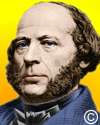 On 8 Mar 1889, John Ericsson died. He was the Swedish-American inventor and naval engineer who invented the screw propeller and built the first armoured turret warship, the USS Monitor. For a short biography written in the prime of his career, read this extract from the 1866 History of American Manufactures on John Ericsson. On 8 Mar 1889, John Ericsson died. He was the Swedish-American inventor and naval engineer who invented the screw propeller and built the first armoured turret warship, the USS Monitor. For a short biography written in the prime of his career, read this extract from the 1866 History of American Manufactures on John Ericsson.
|
 On 8 Mar 1879, Otto Hahn was born, co-discoverer of nuclear fission, for which he was awarded the 1944 Nobel Prize for Chemistry. In the 1930s and 1940s he worked in Berlin with Lise Meitner and Fritz Strassmann on the discovery that uranium nuclei bombarded by neutrons undergo spontaneous fission, releasing enormous energies. That was the seed that grew astonishingly quickly into the atomic bombs that ended World War II. Today's Science Store pick is Otto Hahn: Achievement and Responsibility, by Klaus Hoffmann, who outlines Hahn's contributions to science and his reflections on scientific and social responsibility. Available Used from $24.95 (as of time of writing). On 8 Mar 1879, Otto Hahn was born, co-discoverer of nuclear fission, for which he was awarded the 1944 Nobel Prize for Chemistry. In the 1930s and 1940s he worked in Berlin with Lise Meitner and Fritz Strassmann on the discovery that uranium nuclei bombarded by neutrons undergo spontaneous fission, releasing enormous energies. That was the seed that grew astonishingly quickly into the atomic bombs that ended World War II. Today's Science Store pick is Otto Hahn: Achievement and Responsibility, by Klaus Hoffmann, who outlines Hahn's contributions to science and his reflections on scientific and social responsibility. Available Used from $24.95 (as of time of writing). Yesterday's pick: The Telephone Patent Conspiracy of 1876: The Elisha Gray-Alexander Bell Controversy and Its Many Players, by A. Edward Evenson.
For picks from earlier newsletters, see the Today in Science Science Store home page. | |
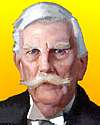
| "(The Constitution) is an experiment as all life is an experiment."
- Oliver Wendell Holmes, Jr., American physician who served as a U.S. Supreme Court Justice, 1902-32. (born 8 Mar 1841)  |
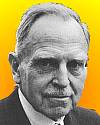 | "As chemists, we must rename [our] scheme and insert the symbols Ba, La, Ce in place of Ra, Ac, Th. As nuclear chemists closely associated with physics, we cannot yet convince ourselves to make this leap, which contradicts all previous experience in nuclear physics." Co-author with Fritz Strassmann, German chemist (1902-80). - Otto Hahn, German physical chemist. (born 8 Mar 1879)  |
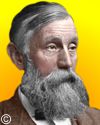 | "The body as a whole may, from a chemical point of view, be considered as a mass of various chemical substances, representing altogether a considerable capital of potential energy."
- Sir Michael Foster, English physiologist. (born 8 Mar 1836)  |
| Before you look at today's web page, see if you can answer some of these questions about the events that happened on this day. Some of the names are very familiar. Others will likely stump you. Tickle your curiosity with these questions, then check your answers on today's web page. |
 |  A German chemist, born 8 Mar 1879, is credited with the discovery of nuclear fission with the radiochemist Fritz Strassmann, He was awarded the Nobel Prize for Chemistry in 1944 and shared the Enrico Fermi Award in 1966 with Strassmann and Lise Meitner. An element carries his name in recognition of his work. A German chemist, born 8 Mar 1879, is credited with the discovery of nuclear fission with the radiochemist Fritz Strassmann, He was awarded the Nobel Prize for Chemistry in 1944 and shared the Enrico Fermi Award in 1966 with Strassmann and Lise Meitner. An element carries his name in recognition of his work.  Can you name this scientist? Can you name this scientist? |
 |  Pyotr Nikolayevich Lebedev, born 8 Mar 1866 was a Russian physicist who is remembered for being the first to demonstrate experimentally a certain property of light in 1910. Pyotr Nikolayevich Lebedev, born 8 Mar 1866 was a Russian physicist who is remembered for being the first to demonstrate experimentally a certain property of light in 1910.  What property of light was investigated by Lebedev? What property of light was investigated by Lebedev? |
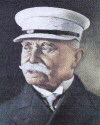 |  A German engineer (1838-1917) was the first notable builder of rigid dirigible airships. After retiring from a military career (1890), he devoted ten years to the designing and building of his first successful light-than-air craft, the LZ-1. Its initial flight on 2 Jul 1900 stimulated funding from the community. Eventually, he produced more than 100 for military uses in WW I. A German engineer (1838-1917) was the first notable builder of rigid dirigible airships. After retiring from a military career (1890), he devoted ten years to the designing and building of his first successful light-than-air craft, the LZ-1. Its initial flight on 2 Jul 1900 stimulated funding from the community. Eventually, he produced more than 100 for military uses in WW I.  Can you name this inventor? Can you name this inventor? |

|  On 8 Mar 1979, Voyager 1 took a photo of Io, a moon of Jupiter, looking back three days after its closest encounter. The data was stored onboard the space probe for later transmission. This was the image in which Linda A. Morabito, a JPL engineer, identified certain features that were the first extraterrestrial examples.. On 8 Mar 1979, Voyager 1 took a photo of Io, a moon of Jupiter, looking back three days after its closest encounter. The data was stored onboard the space probe for later transmission. This was the image in which Linda A. Morabito, a JPL engineer, identified certain features that were the first extraterrestrial examples..  What were the unusual features found on Io? What were the unusual features found on Io? |
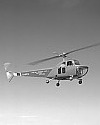
|  On 8 Mar of a certain year, the first U.S. commercial helicopter license was issued to a New York newspaper, which used its Bell 47B helicopter for news gathering and photo delivery. On 8 Mar of a certain year, the first U.S. commercial helicopter license was issued to a New York newspaper, which used its Bell 47B helicopter for news gathering and photo delivery.  In which decade was this helicopter license issued? In which decade was this helicopter license issued? |
When you have your answers ready to all the questions above, you'll find all the information to check them, and more, on the March 8 web page of Today in Science History. Or, try this link first for just the brief answers.
Fast answers for the previous newsletter for March 7: Fritz Wolfgang London; glycine and alanine, the simplest amino acids; neutron; the Hubble Space Telescope; the Royal Institution. |
 If you enjoy this newsletter, the website, or wish to offer encouragement or ideas, please send feedback by using your mail reader Reply button. If you enjoy this newsletter, the website, or wish to offer encouragement or ideas, please send feedback by using your mail reader Reply button. |
--
If you do not want to receive any more newsletters,
Unsubscribe To update your preferences and to unsubscribe visit
this link 


 On 8 Mar 1889, John Ericsson died. He was the Swedish-American inventor and naval engineer who invented the screw propeller and built the first armoured turret warship, the USS Monitor. For a short biography written in the prime of his career, read this extract from the 1866 History of American Manufactures on John Ericsson.
On 8 Mar 1889, John Ericsson died. He was the Swedish-American inventor and naval engineer who invented the screw propeller and built the first armoured turret warship, the USS Monitor. For a short biography written in the prime of his career, read this extract from the 1866 History of American Manufactures on John Ericsson.



 A German chemist, born 8 Mar 1879, is credited with the discovery of nuclear fission with the radiochemist Fritz Strassmann, He was awarded the Nobel Prize for Chemistry in 1944 and shared the Enrico Fermi Award in 1966 with Strassmann and Lise Meitner. An element carries his name in recognition of his work.
A German chemist, born 8 Mar 1879, is credited with the discovery of nuclear fission with the radiochemist Fritz Strassmann, He was awarded the Nobel Prize for Chemistry in 1944 and shared the Enrico Fermi Award in 1966 with Strassmann and Lise Meitner. An element carries his name in recognition of his work.  Can you name this scientist?
Can you name this scientist?
 Pyotr Nikolayevich Lebedev, born 8 Mar 1866 was a Russian physicist who is remembered for being the first to demonstrate experimentally a certain property of light in 1910.
Pyotr Nikolayevich Lebedev, born 8 Mar 1866 was a Russian physicist who is remembered for being the first to demonstrate experimentally a certain property of light in 1910.  What property of light was investigated by Lebedev?
What property of light was investigated by Lebedev? 
 A German engineer (1838-1917) was the first notable builder of rigid dirigible airships. After retiring from a military career (1890), he devoted ten years to the designing and building of his first successful light-than-air craft, the LZ-1. Its initial flight on 2 Jul 1900 stimulated funding from the community. Eventually, he produced more than 100 for military uses in WW I.
A German engineer (1838-1917) was the first notable builder of rigid dirigible airships. After retiring from a military career (1890), he devoted ten years to the designing and building of his first successful light-than-air craft, the LZ-1. Its initial flight on 2 Jul 1900 stimulated funding from the community. Eventually, he produced more than 100 for military uses in WW I.  Can you name this inventor?
Can you name this inventor? 
 On 8 Mar 1979, Voyager 1 took a photo of Io, a moon of Jupiter, looking back three days after its closest encounter. The data was stored onboard the space probe for later transmission. This was the image in which Linda A. Morabito, a JPL engineer, identified certain features that were the first extraterrestrial examples..
On 8 Mar 1979, Voyager 1 took a photo of Io, a moon of Jupiter, looking back three days after its closest encounter. The data was stored onboard the space probe for later transmission. This was the image in which Linda A. Morabito, a JPL engineer, identified certain features that were the first extraterrestrial examples..  What were the unusual features found on Io?
What were the unusual features found on Io? 
 On 8 Mar of a certain year, the first U.S. commercial helicopter license was issued to a New York newspaper, which used its Bell 47B helicopter for news gathering and photo delivery.
On 8 Mar of a certain year, the first U.S. commercial helicopter license was issued to a New York newspaper, which used its Bell 47B helicopter for news gathering and photo delivery.  In which decade was this helicopter license issued?
In which decade was this helicopter license issued?  If you enjoy this newsletter, the website, or wish to offer encouragement or ideas, please send feedback by using your mail reader Reply button.
If you enjoy this newsletter, the website, or wish to offer encouragement or ideas, please send feedback by using your mail reader Reply button. 

Δεν υπάρχουν σχόλια:
Δημοσίευση σχολίου